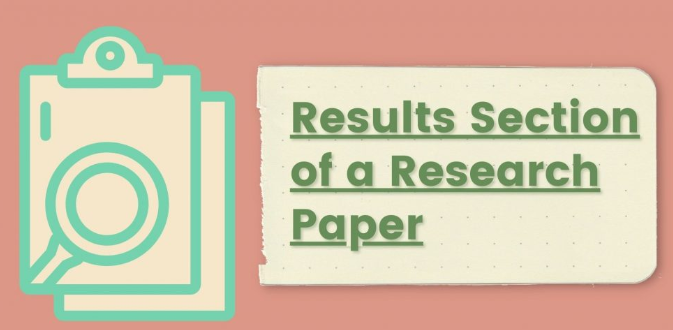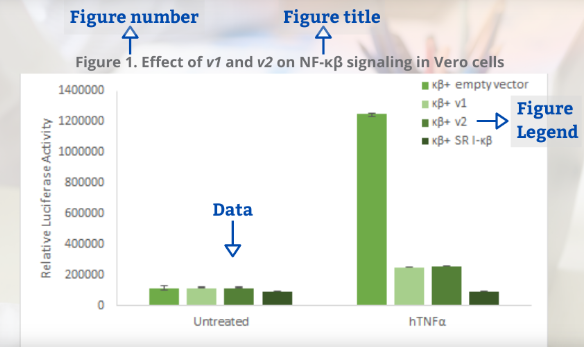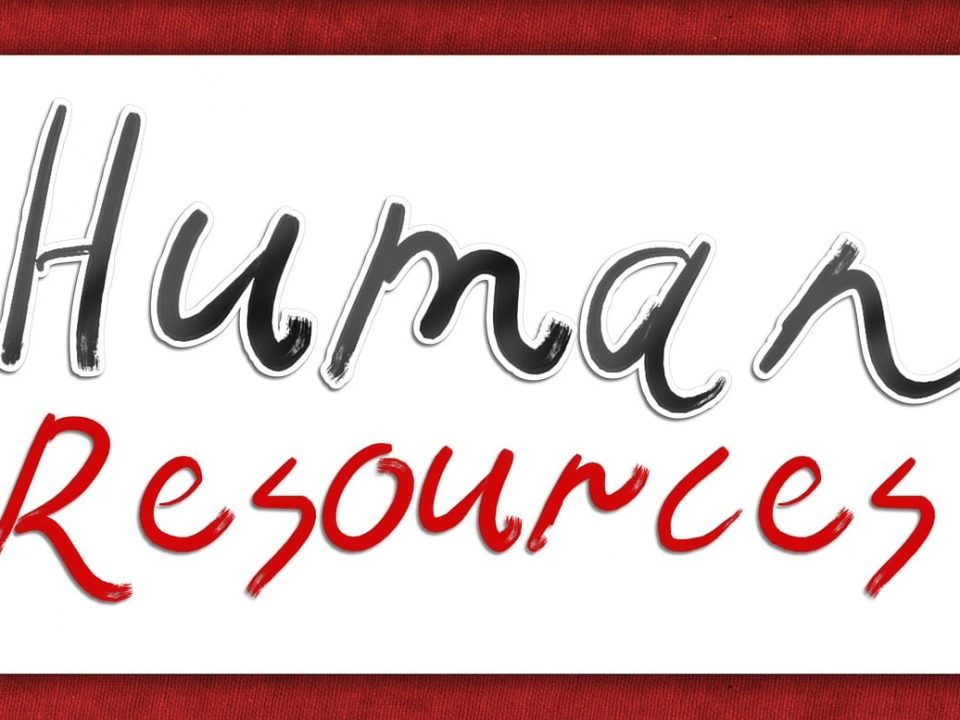Explaining How To Write The Results Section Of A Research Paper With The Aid Of Examples

Do you know how to write the results section of a research paper? Is it challenging to write it? Yes, it is crucial to learn how to write the results section of a research paper, as it is a vital component. Are you interested in learning how to write the results section of a research paper? The present blog aims to make you understand the purpose and composition of the results section. It will also help you understand strategies and techniques to help you write the result section effectively.
Overview of the results section
The results section summarizes the findings of a study’s data acquired through data collection and analysis methods. The researcher writes these findings in a logical sequence with an impartial approach. The results section must not be written under personal interpretation or bias. This section aims to present the data and showcase its relevance to the research question.
How to write the results section of a research paper? The results section in a research paper usually appears after the methodology section but before the discussion. Certain papers like journals club results and discussion together. The fundamental question addressed by this section is, ‘What were the research findings?’
Difference between the result section and the discussion section of a research paper
Some people may get confused with a research paper’s discussion and result section and consider it the same, leading to the amalgamation of both or missing out on one. How to write the results section of a research paper? In the results section, the researcher presents the data collected for the study with a concise explanation. In contrast, the researcher evaluates the collected data thoroughly in the discussion section.
The results section points out the finding objectively, whereas the discussion section explains the meaning of the findings. Hence, the main difference between the two is that the former is a general overview of the data collected, and the latter is a deep analysis of the data collected.
Contents of a result section
While learning how to write the results section of a research paper, it is also essential to understand the structure of a result section. The result section of a research paper must be objective and brief; however, its structure relies on the type of research. In the case of a quantitative research paper then, the followings points must be mentioned:
- The kind of analysis technique utilized in the investigation process
- Relevant inferential and descriptive statistics
- If the alternative hypothesis was retained for each hypothesis or question
However, in qualitative research, the results section must have the following points:
- Recurring patterns
- Important individual responses
- Relevant citations for each question
It is crucial to avoid extended and deep explanations and make speculations in this section, despite the kind of study method applied.
Captioning tables and figures in the result section

The results section incorporates tables and figures that must be placed carefully. They are a significant part of this section and present your findings. So, captioning tables and figures appropriately in a research paper is essential.
How to write the results section of a research paper? Inserting the tables and figures by following a standard design and layout is recommended. The guidelines can be found in the requirements shared by the university or the standard rules mentioned on any academic website.
To provide a caption, rephrase the research questions in a statement format. For instance, if the research question is, ‘What is the impact of using the internet on children?’ The caption can go like this, ‘The influence of the internet on children.’
Reviewing different academic journals available online can also give an idea about the design and layout. They provide a suitable size, number, and complexity of figures.
Writing the results section of a research paper in 5 steps
There is no unique structure for writing the content of the results section, as it depends on the findings of each investigation. The structure and content of this section are influenced by the research area, the paper’s design, the methods applied, and the specification dictated by the university.
A few essential steps to follow while writing the results section are mentioned in this part of the blog on how to write the results section of a research paper.Adhering to the guidelines dictated by the university: Universities and colleges have sample research papers that can be reviewed to understand how to write the results section of a research paper.
Refer to papers with a topic, methods, and data similar to the one investigated by you. Pay attention to the limitations on the content or length, as different research paper samples may have different results sections.
If your university/college allows combining results and discussion, go ahead with that rule. To begin the writing part, look at the aims and objectives and the scope of the paper along with the interest of the intended readers. It will help you customize the section to meet the standards.
Examine the research results considering the instructions: When writing the results section, the findings and experimental outcomes relevant to the research question and objectives, along with contradictory or unexpected outcomes, must be examined.
How to write the results section of a research paper? Use headings and subheadings to provide clarity and structure to the section. If you think the results section requires more explanation, then you can add the explanation as appendices.
You can also use the chronological method by first discussing the outcome of the findings using different techniques; you can follow the sequence of the research questions and hypothesis or lay them in the same order as presented in the methodology section.
Incorporate tables and figures exemplify points: As previously stated in this blog on how to write the results section of a research paper, adding figures and tables is crucial in the results section. The table and figure must be used in the same order as previously used in the findings part.
Figures must be self-explanatory and must have a caption. It should not be a repetition of the previous sections; instead, it must be coherent information. Figures in tables and graphs can enhance the content of the results section. But remember that they should not be utilized as a replacement for written content. Rather, they should add value to the results section.
Outline the results using research findings: After organizing the outcomes, figures, and findings, writing the result, section can begin. How to write the results section of a research paper? The statements written in the result section must be brief and clear.
Begin the few statements of the section by reiterating the research questions so that readers can understand the result section effectively. Toward the end of the section, summarize the vital findings to build a logical transition into the discussion section.
To communicate the results effectively, use past tense and active voice. The approach assists in presenting logical and straightforward information. If using specific terminologies or short forms, explaining each and then continuing to use them is essential.
Revising and editing: Once completing the writing part for the results section, it is crucial to review, edit and revise it until you are satisfied with its outcome. Ensure that the results section’s content is relevant to the findings and the research question. Maintain accuracy and consistency of data in this section.
A loud reading can help recognize the mistakes that can be missed while reading it silently. This method can rectify several errors, including spelling and grammar, formatting and layout, relevancy, etc. If you cannot understand how to write the results section of a research paper, you can seek assistance from your professors, colleagues, or subject matter experts. They can help improve the paper and provide valuable insights.
Tips for writing a results section
The result section of a research paper is significant and effectively depicts the research findings. In this section of the blog on how to write the results section of a research paper, we will discuss a few tips that can help in writing the section.
Furnish a short and crisp summary at the start: If you cannot comprehend how to write the results section of a research paper, you start the section with a summary of the key findings that can provide an instant overview of the ideas.
Include tables and figures: Utilize tables and figures to effectively represent the data. It will make it more understandable and clear for the readers. Make sure that they are properly tilted and labeled.
Organize the results logically: Arrange the content of the result section systematically and follow a logical order. Start by discussing the significant findings and mention their outcomes.
Utilize straight and precise language: There may be certain terms and concepts out of the reach of your readers. Refrain from using such terms and jargon that make your readers stop reading. Utilize straight and precise language to discuss the outcomes.
Be objective: Avoid drawing conclusions or interpretations when offering the findings. Conclusions and interpretations can be drawn in the discussion section.
Utilize statistical analysis: It is vital to report the findings accurately when using statistical tools. In the result section, provide vital details like test statistics, p-value, confidence level, and degrees of freedom.
Connect to the research question: It is essential to connect the results with the research question or the study’s hypothesis. The technique will help keep track and ensure the findings are relevant.
Maintain consistency: Ensure consistency in the results section’s content by utilizing the same format and measurement units
You can effectively write the chapter by following the above tips mentioned in this blog on how to write the results section of a research paper. The chapter will have impactful information and will resonate with the readers.
Things to avoid while writing the results section
There are certain mistakes that students generally commit while writing this section. The drawback list can be found online or in the manual followed by your university/college. Let us detail them in this blog on how to write the results section of a research paper.
Incorporating too much raw data: Avoid adding repetitive information or data in your results section. The findings and the data collection outcome must be summarized in this section without including any calculation or number. The raw data and calculations can be added in the appendix if needed.
Copying information: If certain information is already presented in the previous section in tables and figures, then there is no need to copy the same details in the results section. You can emphasize the vital information in the discussion section of the research paper.
Include research methods or repetitive information: Refrain from including repetitive background information or methods. Do not incorporate a lengthy introduction in this section. If additional information is required to write about the findings, it can be included in the introductory paragraph.
Failure to complement methods and results: Developing and writing the connection between the method and results section is necessary. The experimental observations mentioned in the methods section must be linked in the results section.
Failure to notice negative results or contradictions: The readers will not accept the content of the result section if they find missing information about negative results or points contradicting the conclusion missing from the result section. They will highlight the ethical issues related to the paper. It is essential to highlight all the relevant outcomes even though they contradict the hypothesis. Pointing out the negative result can help provide the basis for further research.
Use of multiple tables and figures: The readers can get overwhelmed by seeing multiple tables and figures in one section. While learning how to write the results section of a research paper, it is important to remember that only relevant tables and figures must be added to the results section. The tables and figures presented must not be complex as it will make the task difficult for readers to understand. Tables and figures having excessive subfigures, abbreviations, unclear symbols, scales, etc., can be complex to understand.
Seek professional help to write a perfect results section
In conclusion to this blog on how to write the results section of a research paper, it can be said that results are a crucial element. Investing enough time to write it accurately and structure it properly is vital. The section’s content must be clear and have tables and figures to make an impactful communication.
If you need assistance finishing your results section, you can take help from TotalAssignment.com. The experts at the organization have extensive knowledge of how to write the results section of a research paper. They can solve all research papers despite the complexity of the topic.
Frequently asked questions
What must be the length of the results sections of a research paper?
The length of the results sections relies on the scope of the investigation and the method used for data collection. But it must incorporate accurate findings and statistical analysis that can prove the study’s hypothesis or research questions. Generally, the results section of a research paper is built of 10 to 30 percent of the total word count assigned for the paper.
Is there a difference between the results section and the conclusion?
Yes, there is a clear difference between the two. The results section presents the interpretation of the findings in a brief manner with the aid of tables and figures. In contrast, the conclusion summarizes the entire research paper, stating its gap and contribution to the field.
What must be the tone of the results section?
The results section must be written in active voice and present tense as it explains the outcomes of the findings already mentioned. For further information, read the blog on how to write the results section of a research paper.
Total Assignment Help
In case, you are looking for an opportunity to work from home and earn big money. TotalAssignmenthelp Affiliate program is the best choice for you.
Do Visit: https://www.totalassignment.com/affiliate-program for more details
Total Assignment Help is an assignment help Online service available in 9 countries. Our local operations span Australia, the US, the UK, Southeast Asia, and the Middle East. With extensive experience in academic writing, Total Assignment Help has a strong track record of delivering quality writing at a nominal price that meets the unique needs of students in our local markets. We have a specialized network of highly trained writers, who can provide the best possible assignment help solution for all your needs. Next time you are looking for assignment help, make sure to give us a try.


